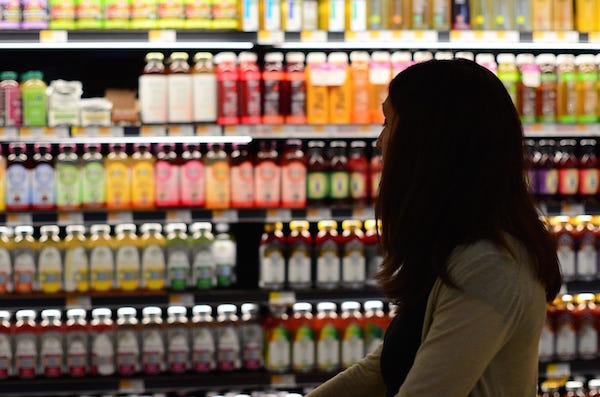There are many ways to make your food company defensibly unique. This can include building an innovative brand that speaks to consumers that weren’t being spoken to before and stands out in its category or categories. This could mean developing a proprietary technology or process that allows you to make truly unique products. This could mean sourcing unique ingredients from a known and understood supply chain.
Food businesses, like all businesses, take on a life of their own if they are successful. What started as one person’s idea or passion quickly turns into a complex branded relationship with a customer supported by complex manufacturing processes and multiple sales, marketing and other staff to support the business growth. Similar to a human life, businesses grow and mature. Unlike a human life, whether or not a business declines and dies is up to the business owner.
Many food businesses start out as a hobby or “side-hustle” of someone passionate about making food. Then, that person starts experimenting with making their products in bigger batches and validating their product in limited venues like a local store or farmers market. But after initially dipping their toes in the water of the food business life, these beginning food entrepreneurs have to decide if they want their business to mature and take the next steps into growth and sustainable revenue. This often involves making big business decisions about scale, financing and the lifestyle the entrepreneur wants to lead while they build their business.
On our podcast this week, Peter Robertson describes the impressive arc and life-cycle of his business and brand RP’s Pasta, now part of Tribe 9 foods and a national brand in its own right. The name “RP’s” is based on his nickname “RP” and reflects how personally involved he was at the beginning in making the products and building all of the relationships that helped sustain his business. But now, the signature gluten-free product lines of the RP’s pasta brand are being rebranded as “Taste Republic” because the new brand more clearly communicates the value proposition to consumers.
Peter experienced the full arc of validating his idea with friends and family, seeking further validation by selling at farmers markets and local grocery stores, later expanding to regional and national distribution and now being part of a portfolio of brands at Tribe 9. As the business has changed, evolved and matured over the past 20+ years, so has Peter and Peter’s role at the company. For example, while he was initially skeptical of taking outside money, he realized how useful taking on an investor was to help finance his brand’s growth at a critical time and how taking out a bigger line of credit helped him more easily manage his cash flow needs.
While businesses go through “growth spurts”, the life of a business that is built to last is a marathon, not a sprint. Business owners like Peter that slowly build capacity and continuously respond to the needs of their core consumers can grow sustainably and thrive even over long periods of time and in today’s competitive marketplace. Being aware of those growth and life cycles can help entrepreneurs put their current activities in a context that helps them make decisions that meet both their personal and business goals.
And now, our roundup of the best food and beverage finance news, events and resources from around the web…
 Business Model Insights
Business Model Insights
- Grocers could lose up to $700B to alternative channels by 2026 (FoodDive) – “Sales growth in the grocery sector has grown just 2% over the last decade in North America and Western Europe, and from 2012 to 2017 more than half of the grocery sector’s economic profit disappeared. The disruption in the industry is due to consumers’ changing habits and preferences, intensifying competition and new technologies.”
- Three Tips to Build a Partnership With Your Co-Manufacturer (Chobani Incubator)
- How food companies are getting consumers to pay more (FoodDive)
 Raising Capital
Raising Capital
- 3 Things to Know About Your Small Business’s Working Capital (Investors Community Bank) – “Working capital is calculated by taking current assets (accounts receivable, cash and equivalents, and any inventory) minus current liabilities (including accounts payable). All small business owners, regardless of industry and employee count, need to understand their company’s working capital cycle, or the amount of time it takes from producing a product or service to receiving payment for that product and service. The longer the cycle, the longer a business is tying up capital without receiving cash to further invest, or pay obligations.”
- Why Crowdfunding Isn’t About the Funding (Pie Shell)
- Having trouble raising capital? Change your strategy (New Hope Network)
CPG/National Brands
- Measure velocity – not doors – to determine early success (Food-Navigator) – “With new players entering the food and beverage space daily, entrepreneurs at startups may feel pressured to stake out their shelf space in as many stores as they can as quickly as possible – but this can be a recipe for disaster. One of the biggest mistakes startup founders make is once they get a little traction and cash flow looks good, they start adding distribution way too fast. When they do that, they are unable to tell in the data whether or not they have consumer pull.”
- Category Strategy from Inside Unilever (Project Nosh)
- Amazon SEO: The basics for boosting natural products sales (New Hope Network)
Market Trends
- Report unveils technology’s role in CPG trends (Refrigerated and Frozen Foods) – “As a growing number of consumers research, purchase and engage with brands digitally, it will likely become imperative for CP companies to adopt newer technologies, or risk being outdated. These developments are likely driven in part by CPG companies’ continued commitment to a customer-centric approach to responding to marketplace trends, understanding consumer preferences and deepening one-on-one connections with customers and consumers.”
- Music, visuals, scent bring consumers in store over e-commerce (Refrigerated Frozen Food)
- 10 retail trends to expect in 2019 (New Hope Media)
 Farming and AgTech
Farming and AgTech
- Who Holds Farm Debt? (Farm Bureau) – “The USDA’s 2018 Farm Sector Income Forecast projected farm sector debt at a record-high $409.5 billion, up 4.2 percent, or $16.4 billion, from 2017 levels. There are a variety of creditors that lend into agricultural credit markets. These creditors include but are not limited to customer-owned Farm Credit institutions, commercial banks, life insurance companies, individuals, Farmer Mac and USDA’s Farm Service Agency. The largest creditors are the Farm Credit institutions and commercial banks, holding a combined $321 billion, or 81 percent, of agricultural debt in 2017.”
- Robotic Milkers and an Automated Greenhouse: Inside a High-Tech Small Farm (New York Times)
- Is Ag Leasing an Option for Your Farm Operation? (Compeer Financial)
 Deals/M&A
Deals/M&A
- How Kraft Heinz’s CIO avoids getting lost in the shuffle of innovation (FoodDive) – “In 2015, Kraft Foods Group and H.J. Heinz Co. announced their merger and created the fifth-largest global food company. CIOs have to strike a balance between making sure processes are in place to keep the lights on and transforming the company. Experimentation is great, and even with fail-fast strategies, a return on business value takes precedent when leveraging new technologies.”
- 2018’s restaurant mergers and acquisitions (Nation’s Restaurant News)
- 2018 ‘another record year’ for food and beverage acquisitions (FoodBev Media)
 Industry Events
Industry Events
- Chobani Incubator Spring 2019 Application (Chobani) – Free to apply, 1/31 Online Application Deadline
- 2019 Organic Vegetable Production Conference (Dane County Extension) – $, 1/31 – 2/1 in Madison, WI
- Farmland Access Bootcamp (Renewing The Countryside) – $, 2/9 in Newton, IA
- MOSES Organic Farming Conference 2019 (MOSES) – $, 2/21 – 2/23 in La Crosse, WI
- Expo West 2019 (New Hope Network) – $, 3/5 – 3/9 in Anaheim, CA
- Food Waste Policy and Practice (WasteCap) – $, 3/19 in Madison, WI
- Good Food Expo 2019 – $, 3/23 in Chicago, IL
- New Uses Forum 2019 (Agricultural Utilization Research Institute) – $, 3/27 – 3/28 in Minneapolis, MN
- Nosh Live Summer 2019 (Project Nosh) – $, 6/10 – 6/11 in New York, NY



